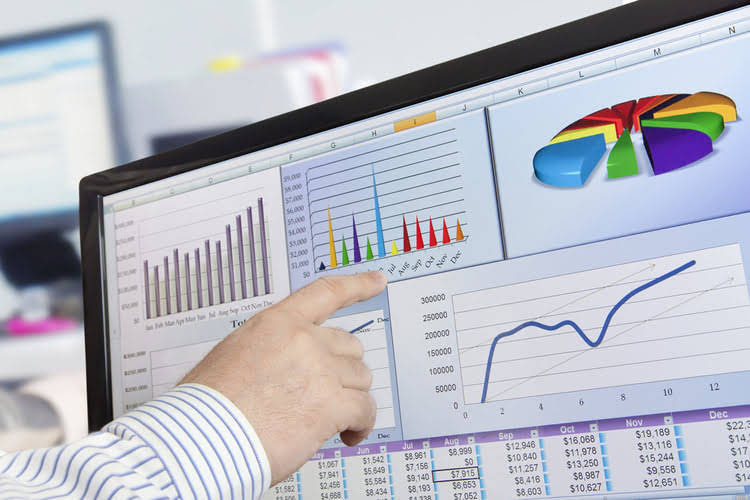
For example, in a job order cost system, each job is unique, which allows management to establish individual prices for individual projects. Process costing suits manufacturers with a consistent manufacturing process, producing similar products or using similar materials. In these situations, process costing can provide an accurate calculation of the cost of production per unit. Instead of actual costs, this strategy employs fixed assets an estimated standard cost for each process stage. Companies generally employ this strategy when gathering current information regarding real expenses is too difficult or time-consuming. It can also be useful for organizations that manufacture a large range of products and find it difficult to assign specific costs to each of the products.

Partner Directory
This method is used for cases where there are slight fluctuations in costs from period to period or where there is no standard costing system. In a process costing system, there are three different ways to calculate costs. This can be done either using the weighted average method, standard costing method, or the first-in-first-out (FIFO) method. It is usually good accounting practice to carefully select the process costing method that best meets a business’s needs.
Discover more from Accounting Professor.org
Some of those are fixed costs which can be used to allocate your overhead for this year. This is crucial to generate job estimates that are as close to your actual cost as possible. If Jennifer’s company doesn’t produce or sell anything during a particular month, many of our costs would not be incurred. The type of costing method you use depends on the type of business you’re running. Here are the major differences in these costing methods to help you decide which is best for you. It is hard to assess each department’s performance as the cost is calculated by total divided by quantity product.

2: Comparison of Job Costing with Process Costing
For instance, in a batch of paint, every gallon “shares” the total cost of materials used in production. Both process costing and job order costing maintain the costs of direct material, direct labor, and manufacturing overhead. The process of production does not change because of the costing method.
- For the past 52 years, Harold Averkamp (CPA, MBA) hasworked as an accounting supervisor, manager, consultant, university instructor, and innovator in teaching accounting online.
- In this article, we have explored the different types of process costing methods used in manufacturing, the advantages and disadvantages of using a process costing system, and the steps involved in process costing.
- This approach matches administrative and other expenses shown on the income statement in the same period in which the company earns income.
- Direct material costs Rs. 25,000 for the filling department, and conversion costs amount to Rs. 50,000 (including direct labor and overhead).
- The diagram above shows the cost flows in a process cost system that processes the products in a specified sequential order.
Direct labor
Companies usually make use of this method in a process costing system when it is time-consuming or not convenient to collect the current information about the real costs. This process costing method is the simplest method for calculating cost. When using this method, the total number of units completed and transferred out is added to the equivalent units of work-in-progress to get the total number of units at the end of the period. Then, all the costs for the current period are summed up and divided by the total number of units.

You can allocate mileage costs based on the number of miles driven to and from your particular customer’s location for instance. We saved more than $1 million on our spend in the first year and just recently identified an opportunity to save about $10,000 every month on recurring expenses with PLANERGY. Even better, Fishbowl integrates seamlessly with accounting platforms like QuickBooks and Xero, connecting your accounting and inventory systems to simplify operations and keep everything running smoothly. Our most robust, on-premises inventory tracking, warehousing, and manufacturing solution with hosted capabilities.
Material Resource Planning (MRP)
- Process costing determines the product’s unit cost and helps evaluate profitability, set selling prices, and make informed business decisions.
- Examine the graphic below that compares job and process costing, noting in particular the difference in how costs are shifted out of work in process.
- Process costing and job order costing are both acceptable methods for tracking costs and production levels.
- It tracks costs by production stages, allocating expenses to completed goods and work-in-process inventory to ensure accurate cost assessment.
By understanding all of the actual costs required to deliver your products or services, you real estate cash flow know exactly where you stand financially so you can be confident in your pricing and profit generation. When ABC Clothing starts production on a particular batch of shirts, costs are tracked in the work-in-progress account. Costs in this account are actual costs which may differ from your budget. Staff time cards can be used to track labor costs until they are assigned to production.
Process Costing in Manufacturing Example

Errors can occur when non-production costs are also included in the calculation. When the units of product are homogeneous, process cost accounting is used. Below are some fictional process costing system examples showing how it works. In addition, the importance of process costing in cost accounting cannot be understated as it can help managers identify bottlenecks and other areas of waste in the production process.
Process costing is used for mass-producing similar products in continuous processes, where costs are averaged over units. Job process cost system examples costing, in contrast, tracks costs for distinct, individual products or batches, accounting for unique materials and labor per job. These devices track utility consumption, such as gas, water, and electricity.